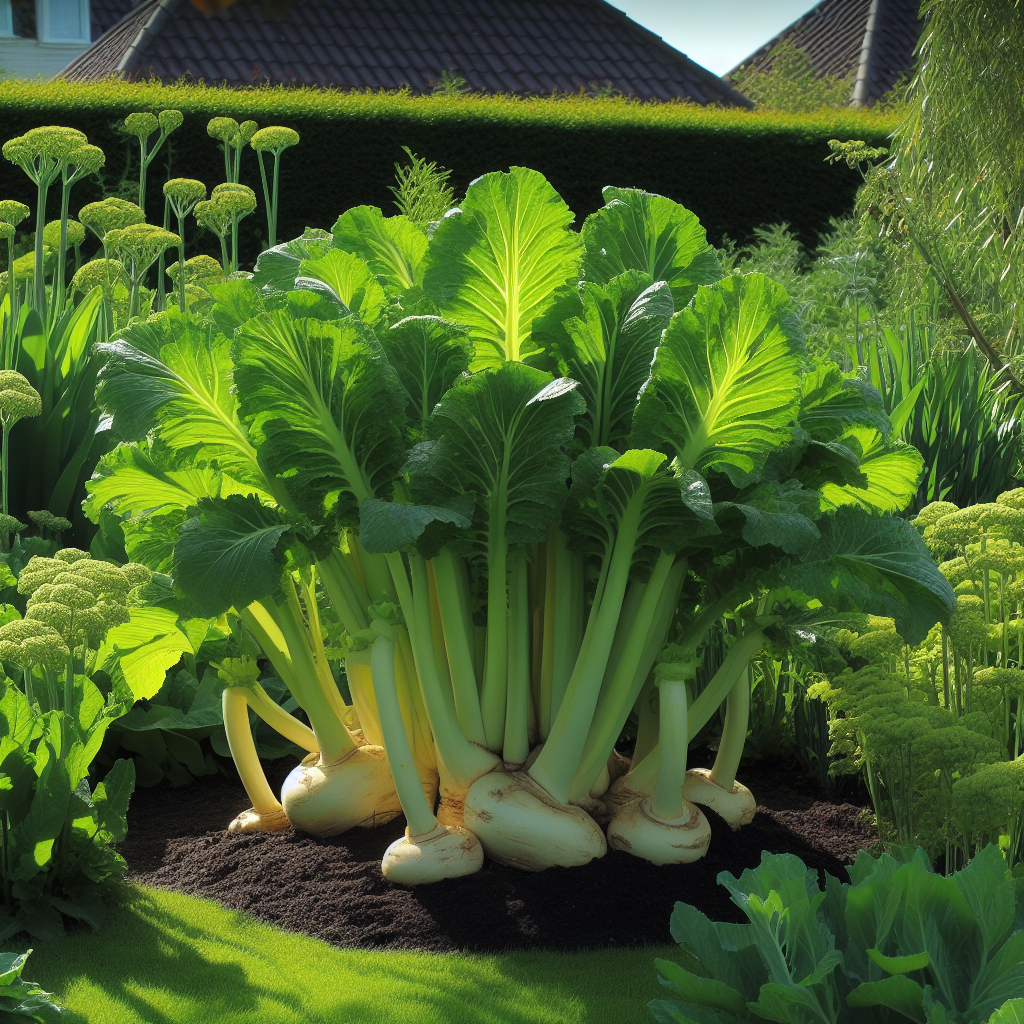Welcome to the world of horseradish (Armoracia rusticana), a robust perennial with a punchy character that’s not just a culinary delight but also a formidable nutrient-cycling companion in your garden. In this comprehensive guide tailored for hobbyist gardeners, we’ll delve into the secrets of cultivating and enjoying this Eastern European native.
Botanical Overview
- Botanical Name: Armoracia rusticana syn. A. lapathifolia
- Common Name: Horseradish
- Family: Brassicaceae syn. Cruciferae
Plant Description
Horseradish is a perennial powerhouse reaching up to 1.5 meters in height, anchored by a fleshy taproot that can grow up to 60 cm long and 5 cm thick. With large basal leaves boasting toothed margins, it adds both texture and character to your garden. The white flowers make a midsummer to mid-autumn appearance. Known for its adaptability, it thrives in temperate climates and can even become an “edible weed” in some gardens. However, it’s a plant that demands a permanent spot, as any disturbance can lead to new plants sprouting from broken roots, potentially turning it into an invasive force.
Uses
- Culinary Marvel: The fresh roots of horseradish are culinary magicians, adding a bold flavor to meats, vegetables, and pickles. Process them into sauces or vinegars for that distinctive zing. Even young leaves join the culinary ensemble, elevating salads or serving as a delightful potherb.
- Forced Elegance: Bring horseradish roots indoors during winter and watch them produce tender, sweet leaves with a unique white hue when forced.
- Soil Savior: In orchards, horseradish acts as a nutrient-cycling superhero, breaking up compacted soils with its deep roots and returning valuable nutrients to the surface.
Planting Details
- Optimal Time: Propagate through root or crown division in the spring or autumn. Root cuttings, around 60 mm long, can be laid horizontally in prepared soil or potting mix. Keep them buried about 3 cm deep, ensuring consistent moisture until the first leaves emerge.
- Spacing Wisdom: When planting, allow a generous 50 cm of space between each horseradish, giving them room to flourish without encroaching on their neighbors.
Tips for Hobbyist Gardeners
- Steadfast Permanence: Horseradish loves a fixed address. Once planted, avoid unnecessary disturbances, as any broken roots can result in new plants sprouting.
- Culinary Creativity: Experiment with horseradish in the kitchen. Whether as a zesty sauce or a surprising addition to salads, let your culinary creativity unfold.
- Forcing Fun: Bring a bit of gardening indoors during winter by forcing horseradish roots to produce those elegant, sweet leaves.
- Orchard Ally: Consider planting horseradish in orchards to not only spice up your meals but also to enhance soil structure and nutrient cycling.
Adds a dynamic element to your green haven
Horseradish isn’t just a condiment; it’s a versatile companion in your gardening journey. From its resilient nature to its culinary charm, horseradish adds a dynamic element to your green haven. Follow this guide to unleash the full potential of horseradish in your garden, and enjoy the flavorful rewards it brings to your kitchen. Spice up your gardening experience with the bold and robust character of horseradish—your garden’s very own culinary and horticultural hero.
